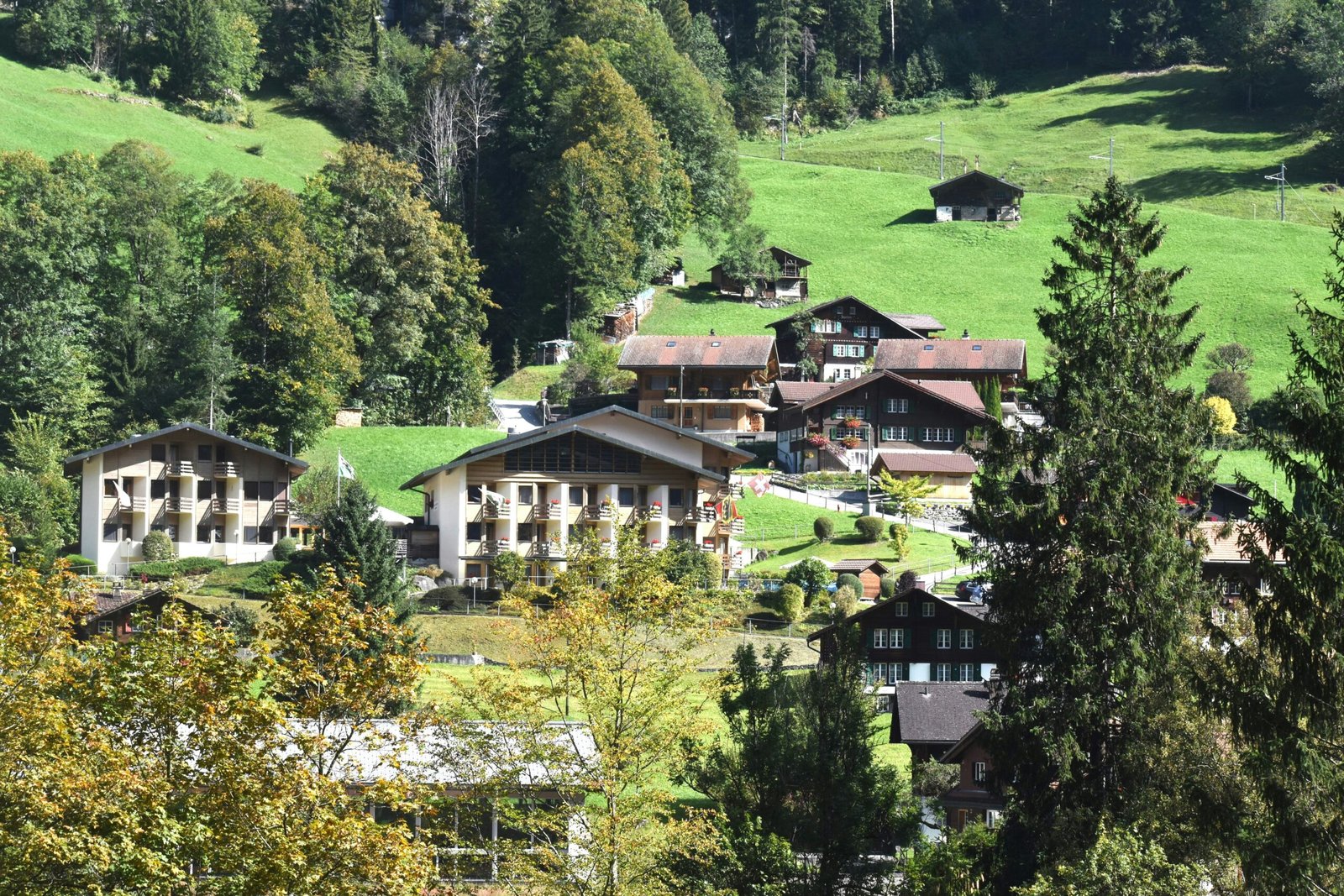
Introduction to China’s Tourism
China, a nation steeped in history and culture, boasts a rich tapestry of experiences that allure travelers from across the globe. From its vibrant cities to its tranquil landscapes, China’s tourism industry has seen significant growth in recent years, becoming a vital part of its economic landscape. This impressive surge in tourism reflects not only the nation’s diverse offerings but also its commitment to showcasing its cultural heritage.
The vastness of China presents a stunning array of attractions. The Great Wall, an architectural marvel, snakes across the northern regions, while the Terracotta Army stands as a testament to the country’s ancient civilization. Beyond historical sites, the natural beauty of China is equally captivating. The breathtaking karst mountains of Guilin and the serene waters of West Lake provide perfect backdrops for relaxation and exploration.
<pmoreover, a="" adds="" age-old="" also="" and="" are="" attractions,="" beijing="" blend="" bustling="" but="" china="" china's="" cities="" contemporary="" culinary="" culture="" delights,="" destination="" experience.="" festivals.="" flavor="" for="" harmonious="" high-tech="" immerse="" in="" infrastructure,="" integration="" juxtaposed="" life.<pas a="" accommodation="" adventure="" among="" and="" as="" awareness="" china="" china's="" cultural="" culture="" destination,="" does="" enhance="" every="" experience.="" for="" further="" government’s="" heritage="" in="" including="" infrastructure="" initiatives="" international="" investments="" its="" kind="" must-visit="" natural="" of="" ongoing="" p="" popularity="" positions="" promote="" provide="" ready="" rises,="" services,="" so="" tapestry="" the="" this="" to="" tourism,="" transformation="" transport="" travel="" traveler.
The Great Wall of China
The Great Wall of China, a UNESCO World Heritage site, is one of the most recognized symbols of Chinese civilization. Stretching over 13,000 miles, the wall epitomizes an extraordinary feat of engineering and design, built over several centuries starting from the 7th century BC. Initially constructed to protect Chinese states and empires from invasions, the Great Wall also functioned as a means of border control and trade facilitation. Its architectural significance lies not only in its sheer scale but also in the diverse techniques and materials utilized across different regions, showcasing various dynasties’ craftsmanship.
Among the most famed sections of the wall are Badaling, Mutianyu, and Jinshanling. Badaling, being the most visited, offers convenient access and amenities, while Mutianyu is praised for its stunning scenery and fewer crowds. For a more rustic and less commercialized experience, Jinshanling provides breathtaking views and hiking trails. The best time to visit is during the spring (April to June) and autumn (September to November), when the weather is mild and the landscape is vibrant.
To make the most of your visit to the Great Wall, consider starting early in the day to avoid crowds. Wear comfortable shoes and bring water, as some sections require extensive walking and climbing. It is advisable to explore during the weekdays for lesser foot traffic. Interesting facts about the wall include that its construction involved millions of laborers, and it is said that the wall is so massive it can be seen from low Earth orbit, although this claim is debated. The Great Wall of China continues to captivate millions, telling tales of past struggles and triumphs embedded within its storied stones.
The Forbidden City in Beijing
The Forbidden City, situated in the heart of Beijing, stands as a testament to China’s imperial history and architectural grandeur. Constructed between 1406 and 1420, this monumental structure served as the imperial palace for 24 emperors of the Ming and Qing dynasties. Spanning approximately 180 acres, the Forbidden City is not only the largest ancient palatial structure in the world but also a UNESCO World Heritage Site, recognized for its cultural significance and architectural excellence.
The architectural design of the Forbidden City is a remarkable representation of traditional Chinese palatial architecture, characterized by its intricate woodwork, vibrant colors, and grandiose structures. The complex consists of nearly 1,000 buildings, including the Hall of Supreme Harmony, where emperors would host important ceremonies. Each architectural element—from the imposing gates to the delicate roof tiles—embodies ancient Chinese cosmology and symbolism. The meticulous attention to detail in its construction reflects the profound artistry and craftsmanship of the era.
Within the walls of the Forbidden City lies a vast collection of artifacts, numbering over a million items, including imperial treasures, ancient manuscripts, and valuable artworks. The Palace Museum, which occupies the site, offers visitors a glimpse into the lives of the emperors and the rich cultural heritage of China. Guided tours are highly recommended for those wanting a comprehensive understanding of the site, as knowledgeable guides can provide invaluable insights into the historical context and significance of various buildings and artifacts.
For a fulfilling visit, it is advisable to arrive early to avoid the larger crowds. Engaging with the museum’s educational programs can further enhance the experience, allowing visitors to immerse themselves in the captivating history of the Forbidden City. As one traverses through its majestic halls and tranquil gardens, the grandeur of ancient Chinese civilization reveals itself, making it an unmissable destination for tourists in China.
Terracotta Army in Xi’an
The Terracotta Army, an extraordinary archaeological find, is located near Xi’an in Shaanxi Province, China. This magnificent site dates back to the third century BC and was constructed to guard the mausoleum of Qin Shi Huang, the first Emperor of China. The significance of the Terracotta Army lies in its representation of the emperor’s imperial power and belief in the afterlife. More than 8,000 soldiers, along with chariots and horses, have been unearthed, each crafted with unique facial features and expressions, which illustrates the high level of artistry and technology of the time.
The discovery of the Terracotta Army was a remarkable event. In 1974, local farmers stumbled upon the site while digging a well, leading to one of the most significant archaeological excavations in history. As excavations progressed, historians and archaeologists uncovered various pits containing the army, which indicated the vastness of the burial site. The meticulous details recognized in each figure, such as military rank and the individual styles of weaponry, serve not only as artistic achievements but also as a valuable resource for understanding ancient Chinese military culture.
For those planning a visit, the Terracotta Army is accessible year-round, with the peak tourist season falling during spring and autumn. The site comprises multiple pits, with Pit 1 being the largest and most famous. Visitors have the option to take guided tours that provide in-depth insights into the historical context and significance of the figures. Additionally, the site features a museum, showcasing artifacts unearthed from the area. When visiting, it is advisable to allocate a significant amount of time to fully appreciate the scale of the army and the complex history surrounding it.
The Li River and Yangshuo
The Li River, renowned for its breathtaking scenery, is often regarded as one of the most beautiful rivers in China. This stunning waterway meanders through the quintessential karst landscape of Guangxi Zhuang autonomous region, with limestone peaks that rise dramatically from the earth, creating a picturesque backdrop. Tourists flock to this region to experience its striking natural beauty, making it a must-visit destination for any traveler in China.
One of the most popular ways to appreciate the scenic views of the Li River is through a river cruise, which offers an opportunity to enjoy the tranquil waters while observing the lush green countryside and unique rock formations. Cruises typically run between Guilin and Yangshuo, with trips showcasing iconic sights such as the Elephant Trunk Hill and the Nine Horses Mural Hill. Several operators provide options ranging from budget-friendly to luxury cruises, allowing visitors to choose their experience based on their preferences.
In addition to the river cruise, Yangshuo presents numerous opportunities for outdoor activities that cater to adventure enthusiasts. Hiking and biking through the surrounding countryside are popular ways to explore the area’s natural wonders. Routes often lead to hidden coves, rice terraces, and quaint villages where travelers can embrace the local culture. Engaging in these activities not only allows visitors to enjoy the serene landscapes at their own pace but also fosters a deeper connection with the region’s natural beauty.
Photography lovers will find the Li River and Yangshuo particularly rewarding, as the stunning vistas provide countless opportunities for capturing memorable shots. Key locations include the riverside at dawn, when the mist envelops the hills, and the iconic landscape at sunset, which creates a magical glow. With its breathtaking scenery, diverse outdoor activities, and rich photographic potential, the Li River and Yangshuo stand out as essential stops on any journey through China.
Zhangjiajie National Forest Park
Zhangjiajie National Forest Park, renowned for its distinctive geological formations, presents an awe-inspiring landscape characterized by thousands of sandstone pillars that rise dramatically from the ground. This remarkable area, which was designated as China’s first national forest park in 1982, has inspired various artistic works, including the famous floating mountains depicted in James Cameron’s film “Avatar.” The park’s unique topography and lush biodiversity make it an essential destination for nature enthusiasts and adventure seekers alike.
Visitors to Zhangjiajie can explore an array of hiking trails that cater to various skill levels. The most popular trail is the Huangshizhai path, which offers stunning panoramic views. For those seeking a more exhilarating experience, the Yuanjiajie area features a series of wooden walkways and elevated trails that allow adventurers to traverse the dramatic cliffs and pillars. These trails not only showcase the park’s natural beauty but also provide insight into the rich flora and fauna that reside within this UNESCO World Heritage Site.
A notable highlight of Zhangjiajie is the famous glass bridge spanning the Zhangjiajie Grand Canyon. This engineering marvel, which holds the record for the world’s longest and highest glass bridge, provides a thrilling perspective of the canyon below and an unforgettable experience for visitors. However, it is essential to reserve tickets in advance due to its popularity.
When planning a visit to Zhangjiajie National Forest Park, it is important to consider safety tips. Ensure you wear sturdy footwear suitable for hiking, stay hydrated, and follow marked trails to prevent accidents. The park can be quite crowded, particularly during peak seasons, so early arrival is recommended for a more enjoyable experience. Overall, Zhangjiajie is a breathtaking destination that combines natural beauty, thrilling experiences, and opportunities for adventure that should not be missed.
Guilin’s Reed Flute Cave
Reed Flute Cave, located just outside the picturesque city of Guilin, is one of China’s most spectacular natural wonders. This enchanting limestone cavern, known for its striking stalactites and stalagmites, attracts visitors from around the globe. The cave’s stunning formations, created over millions of years by the erosion of limestone, resemble a grand underwater kingdom, offering a unique geological showcase. Among its enchanting features are various shapes and colors, illuminated by artificial lighting to accentuate the cave’s beauty.
To reach Reed Flute Cave, visitors typically travel from Guilin’s city center, which is approximately 5 kilometers away. Public buses and taxis are readily available, providing convenient access to this natural treasure. The entrance to the cave is well-marked, and ticket prices are reasonable, making it an accessible destination for travelers. Once inside, guided tours lead visitors through the winding pathways, highlighting significant formations and providing insights into the cave’s history and cultural importance.
Reed Flute Cave holds a prominent place in Chinese culture, often referred to as “the Palace of Natural Arts” for its extraordinary beauty. The site has been a popular tourist attraction for centuries, with references to the cave appearing in poetry and literature. Visiting this iconic site offers a glimpse into the rich cultural heritage of China and creates memorable experiences for explorers.
For those interested in experiencing Reed Flute Cave while avoiding large crowds, planning a visit during the early morning or late afternoon hours is recommended. This timing not only allows for a peaceful experience but also enhances the opportunity to appreciate the cave’s intricate formations without the distraction of many visitors. In conclusion, Reed Flute Cave is a must-see destination that combines natural wonder with cultural significance, making it a highlight of any trip to Guilin.
The Potala Palace in Lhasa
The Potala Palace, an iconic symbol of Tibetan Buddhism, stands majestically atop Marpo Ri Hill in Lhasa, Tibet. This architectural wonder, with its grand design and vibrant colors, reflects a unique blend of traditional Tibetan and Chinese influences. Constructed in the 7th century during the reign of King Songtsen Gampo, the palace has served as the winter residence of the Dalai Lamas and remains a pivotal spiritual site for pilgrims from around the world.
Visitors to the Potala Palace often find themselves captivated by its intricate frescoes, bustling chapels, and the majestic stupa of the Dalai Lamas. The palace complex is divided into two main sections: the white palace, which houses living quarters and government offices, and the red palace, which is primarily a spiritual center filled with halls and chapels. This stunning architecture not only provides a glimpse into the artistry of ancient Tibet but also serves as a testament to the resilience of Tibetan culture and tradition in the face of historical challenges.
When visiting the Potala Palace, it is essential to be mindful of acclimatization, as Lhasa is situated at an altitude of approximately 3,700 meters. To ensure a comfortable experience, tourists are advised to take a few days to adjust to the altitude, allowing their bodies to acclimatize to the thinner air. Additionally, respecting the cultural and religious significance of the site is of utmost importance. Visitors should observe appropriate behavior, such as not taking photographs in sacred areas and maintaining a respectful demeanor throughout their visit.
Engaging with this sacred destination provides insights into the rich history and spiritual practices of Tibetan Buddhism. The Potala Palace, with its striking presence and serene atmosphere, undoubtedly stands out as a must-visit landmark for anyone traveling to China.
Conclusion: Why China Should Be on Your Travel Bucket List
In considering your next travel destination, China presents a compelling case for adventure seekers, culture enthusiasts, and nature lovers alike. The array of tourist destinations discussed, including the iconic Great Wall, the serene landscapes of Zhangjiajie, and the bustling streets of Shanghai, reflect just a fraction of what this vast country has to offer. Each location provides a unique narrative that weaves together China’s rich history, diverse cultures, and breathtaking natural beauty.
Travelers will find that China is not just a destination; it is an experience that invites exploration. The ancient traditions evident in places like Xi’an, home of the Terracotta Army, contrast beautifully with modern marvels such as the stunning skyline of Shenzhen. This juxtaposition allows visitors to delve deep into both the past and the present, creating a fulfilling journey unmatched by other locations. Furthermore, natural wonders like the Li River and the Yellow Mountains showcase the country’s majestic landscapes, providing ample opportunities for outdoor activities and breathtaking photography.
For those who appreciate gastronomic adventures, China’s culinary scene is both diverse and delicious, with regional specialties that tantalize the taste buds. The warmth of the local culture and the vibrancy of customs throughout the country ensure a welcoming atmosphere that enhances the travel experience. As you plan your travel bucket list, consider that the remarkable destinations in China offer a combination of cultural, historical, and natural richness, promising memories that will last a lifetime. Thus, a trip to China is not just a journey to a country but an expedition into a fascinating world waiting to be discovered.


